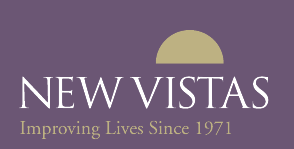Forest Service BAER Team Begins Post-fire Assessment of Hermit’s Peak/Calf Canyon Fires
FOREST SERVICE BAER TEAM BEGINS
POST-FIRE ASSESSMENT OF HERMITS PEAK AND CALF CANYON FIRES
The Santa Fe National Forest (SFNF) has established a Burned Area Emergency Response (BAER) team to begin the assessment of National Forest System (NFS) lands impacted by the Hermits Peak and Calf Canyon Fires on the east side of the Sangre de Cristo Mountains. Due to the large size and ongoing active fire behavior on these two wildfires, the BAER team divided the burned area into phases for assessment and analysis, beginning in the cooler areas of the fire. The team plans to start its assessment in the Upper Gallinas Watershed.
After a large wildfire, special actions may be necessary to provide for public and community safety and protect critical natural and cultural resources from post-fire events like soil erosion and flooding. The BAER program uses ground and aerial surveys, satellite imagery and computer models to evaluate conditions and recommend emergency treatments to protect values at risk from further damage.
Information about the Hermits Peak Fire can be found online at https://inciweb.nwcg.gov/incident/8049/, the Calf Canyon Fire at https://inciweb.nwcg.gov/incident/8069/, and information about the Hermits Peak & Calf Canyon BAER assessments at https://inciweb.nwcg.gov/incident/8104/.
BAER teams focus on emergency actions necessary to protect human life and safety, property, and natural and cultural resources, including affected watersheds. BAER assessments identify unacceptable risks on federal lands from post-fire threats and help land managers prepare burned areas for potential threats from rainstorms. Burned areas often experience increased soil erosion and runoff from rainstorms.
The Forest Service BAER team assessing the Hermits Peak and Calf Canyon Fires consists of hydrologists, soil scientists, road engineers, biologists, botanists, archaeologists, recreation specialists, and geographic information system (GIS) specialists. The first step in the BAER assessment process is taking pre-fire and post-fire satellite imagery and data to produce a soil burn severity map, which will provide baseline information on changed watershed conditions and potential watershed impacts from the fire. The BAER team’s assessment report will include recommended emergency stabilization treatments and actions.
The BAER team will coordinate and share information from its assessment with other federal agencies, including the Natural Resources Conservation Service (NRCS), NOAA National Weather Service (NWS) and US Geological Survey (USGS) as well as state agencies and local counties and municipalities who work with adjacent and downstream private homeowners, landowners and businesses to prepare for potential post-fire flooding and debris flow impacts. NRCS is a federal agency that has post-fire responsibilities on private lands both within and downstream of burned areas.
Homes or businesses that could be impacted by flooding from federal land that result from wildfires may be eligible for flood insurance coverage from the National Flood Insurance Program (NFIP). Information about NFIP is available through FEMA at www.fema.gov/national-flood-insurance-program, or www.floodsmart.gov/wildfires. Other flood preparedness information is available at www.ready.gov/floods at www.floodsmart.gov/.
BAER SAFETY MESSAGE: Everyone near and downstream from the burned areas should remain alert and stay updated on weather conditions that may result in heavy rains and increased water runoff. Flash flooding may occur quickly during heavy rain events – be prepared to act. Current weather and emergency notifications can be found at the National Weather Service website: www.weather.gov/abq/.
